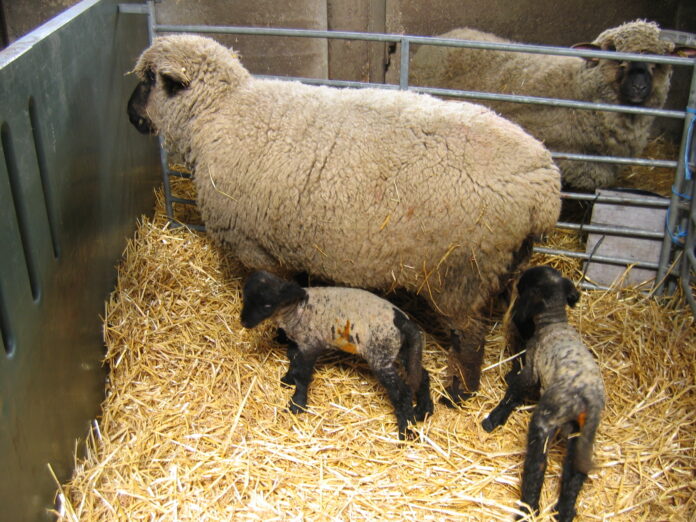When there is increase in fertility rate of your sheep’s then the chances of increase in profits plays out on its own. When it comes to your sheep flock, you don’t need someone to tell you that healthier pregnancies tend to result in healthier profits. Here are four tried and tested methods for improving ewe fertility to ensure a successful lambing season.
1. Keep bodyweight in check
Healthy bodyweight is a crucial for healthy fertility. The simplest way to assess your ewes is to use their Body Condition Score rating them on the scale from 1(too thin) to 5(too fat). Place one hand over the backbone at the loin area behind the last rib. Use the same hand for each ewe. Feel to see if the spine is prominent and sharp or not detected at all. If the loin is thin and has no fat cover, the sheep is too thin. If it’s rounded with a thick covering of fat, the sheep needs to slim down. The ideal bodyweight is between 2.5 and 3.5.
Sheep should maintain a healthy body weight for at least three weeks before mating and the easiest way to satisfy different dietary needs is to separate ewes into feeding groups. Thin ewes should be fed on grass or given additional feed. Overweight ewes should be fed on poorer pasture to gradually reduce their condition.
2. Continuous veterinary checkups
Calling a vet to check your sheep during pregnancy can be helpful in telling you how many lambs the ewe is carrying, which will help you plan each ewe’s diet. Twins, for example, often need supplements for trace elements and Vitamin E. Additionally, triplets can benefit from protein-rich feeds, to enable good colostrum production.
There are further benefits checkups. If you keep accurate records on how many lambs each ewe is carrying, you will be able to assess the difference between the number of lambs that were scanned and the number that were actually born. This will show you how many lambs are lost during pregnancy or birth. This will highlight any potential disease problems or dietary issues that may need to be addressed.
3. Control disease
Vaccination may add to your overheads, but it’s far cheaper than sourcing replacement sheep. To protect against deaths at birth or weak lambs being born, vaccinate ewes against toxoplasmosis and enzootic abortion. It’s best to vaccinate ewes 4-6 weeks before mating. All at risk ewes should have protection from parasitic liver fluke and young and thin sheep could also benefit from being wormed.
4. Keep the best flock
You want healthy pregnancies and productive ewes. That’s why it’s a good idea to pay close attention to how many lambs each ewe has. Unfortunately, a barren ewe is likely to be barren the next year. Likewise, if udders are in bad shape or an ewe is lame, it is less suitable for breeding in the future. Replacing these sheep will make your flock more prosperous. A good idea is to mark them will colored tags based on their reproductive information. Then next mating season, it will be far easier to replace or sell your worst performers.
Improving the fertility of your flock doesn’t have to be hard work. Follow the simple principles that have been tried and tested to make the next lambing season your most profitable ye








